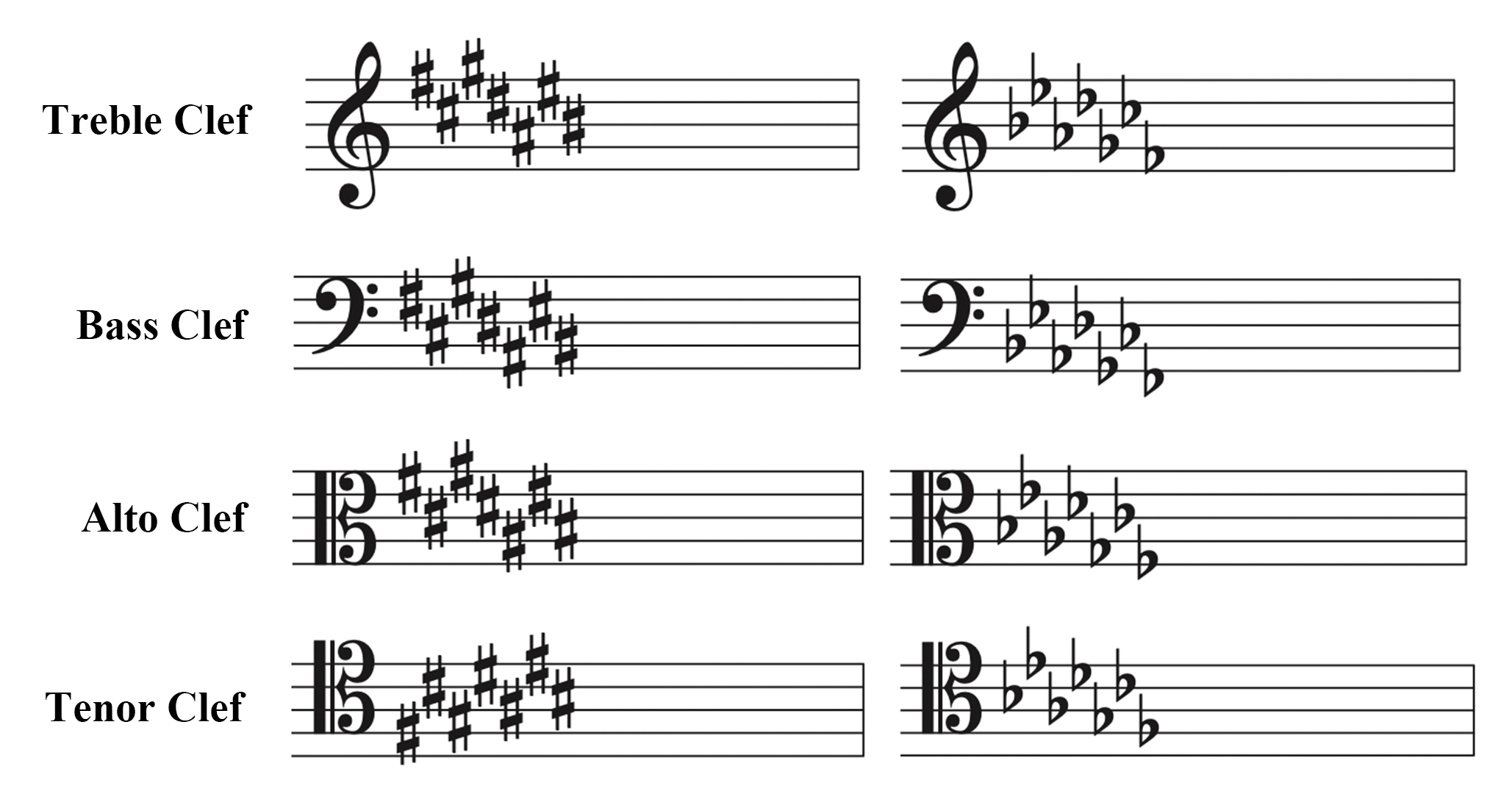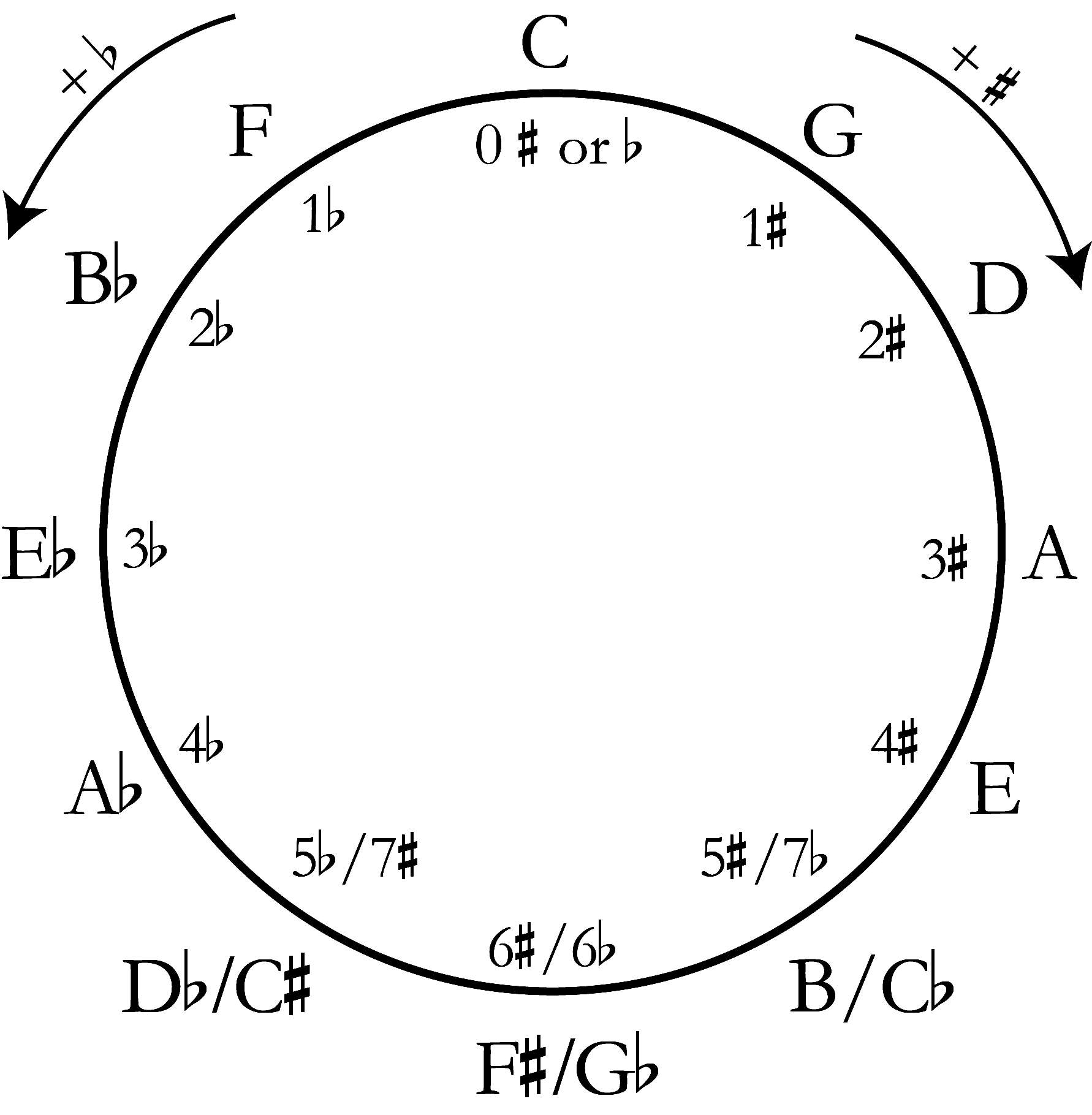3.2 Major Scales: Tutorial
Major Scales and Keys
Scale definition
Scales are an arrangement, in ascending or descending order, of the pitch material upon which a composition is based. Scales are the basic building blocks of music. Each type of scale has a specific patterns of steps.
Scales in Music
Why do we have so many major and minor keys? What makes a composer choose one scale or key over the other?
The choice of key or scale can be a practical decision. Composers often consider range of the instrument or range of the singer and choose a key that lets an instrument and singer perform comfortably and easily. Instruments have different qualities of sound in different registers that can be highlighted by choosing a specific key or scale. Composers often choose a key that lets choruses resonate or soloists sparkle. Instrumental design in different time periods is also a factor. Early instruments didn’t have keys or valves and could only play comfortably in a limited number of keys.
Sometimes the key or scale used is chosen to fit in with a system that is already in place. For example, J.S. Bach’s Well Tempered Clavier has 48 preludes and fugues with a major and minor set for each key. Other composers like Chopin and Shostakovich followed the same kind of structure. Many etude books for instruments are designed to cover all keys in a systematic progression.
Another reason composers might choose one key over another are the emotions and affects associated with different keys. Before equal tuning was adopted in the 20th C, certain keys were associated with specific emotions and qualities. Keys sounded different because of the timbre and pitch of certain half steps. Composers knew this and so did audiences. They expected certain emotions from each key. Use this link to learn more about key associations: https://wmich.edu/mus-theo/courses/keys.html. While we don’t experience changes of timbre and tuning the same way today due to equal tuning, composers still choose keys for their relative bright or dark qualities.
Major Scales
The major scale consists of this pattern of whole and half steps: W W H W W W H.

You can draw any major scale by following that step pattern from any starting pitch. However, it is much faster to draw a scale from a key signature. Knowing that C major has no sharps or flats in the key signature allows you to quickly draw the notes of the scale without having to take the time to determine the whole and half step pattern between notes. In order to use key signatures to identify and write scales and keys, it’s important to know the order of sharps and flats on the staff in each clef as well as the Circle of 5ths relationship between keys.
Order of Sharps and Flats on the Staff
Sharps or flats are placed at the beginning of each staff to show what notes are consistently raised or lowered in the key. The order of sharps and flats and their placement on the staff in each clef are precise. The order of sharps, F C G D A E B, is the same as the order of flats in reverse: B E A D G C F.

The order of sharps and flats on the staff is the same in all clefs, but the placements of sharps and flats on the staff is specific to each clef. Memorize their placement on the staves.

The Circle of 5ths
The Circle of 5ths is a diagram that shows key signatures in order of their sharps and flat as well as their relationships to each other. There are 15 major keys. The circle begins with C major at the top center because C major has no sharps or flats in its key signature. If we read clockwise around the circle, each new key adds an accidental and is a fifth away from the previous key. If we read counterclockwise around the circle, each new key adds and accidental is a fourth away from the previous key. Notice that there are three instances of enharmonic keys that overlap on the circle: B major and Cb major, F# major and Gb major, and C# major and Db major.

Key Signature Tips and Tricks
Common mistakes made when naming keys include leaving off “flat” or “sharp” after keys that need the accidental as part of their name, and naming keys enharmonically. If a key is not found on the chart, we do not use it in music. For example, there is no A# major.
When naming sharp keys, the last sharp in the key signature is a half step below the name of the key. For example, in G major, a half step below G is F#, so F# is the last sharp in the key. That tells you that G major only has 1 sharp because F# is the first sharp in any key. You can also use this trick when identifying a given key signature on a staff by looking at the last sharp listed and going up a half step to name the key.
When naming flat keys, the second to last flat is the name of the key. For example, to find the key signature for Db major, list the order of flats until you have 1 more flat than the name of the key: B E A D G. This tells you Db major has 5 flats. You can also use this trick when identifying a given key signature on a staff by looking at the second to last flat to name the key (remember that F Major only has 1 flat, so this trick does not work for F major).
It is also helpful to memorize that they keys that begin with “C” have either zero or all 7 flats or sharps: C major has zero, C# major has 7 sharps, and Cb major has 7 flats.
Scale Degree Names
Major scales are not just a collection of notes using the same pattern that start on a certain note. Each scale degree in a key has a degree of tension that needs to be resolved. A chord built on a specific scale degree have a functional relationship with those chords around it within the key. The major scale below has been written with scale degrees over each note. In any key, scale degrees show us the order of notes in the key. Scale degrees use carets above the numbers to distinguish them from other symbols. Note that you can use either scale degree 8 or scale degree 1 for the repeated octave note at the top of the scale.

Each scale degree in a key has a name that indicates its function in the key.
| Scale Degree | Name | Name comes from |
| 1 | tonic | “home base,” most stable pitch, beginning and end point |
| 2 | supertonic | Pitch right above tonic (super means above) |
| 3 | mediant | Pitch halfway between tonic and dominant (mediant means middle) |
| 4 | subdominant | Pitch right below the dominant (sub means below) |
| 5 | dominant | Dominant to tonic motion is one of the most important types of motion in tonal music. We can see one instance of that in the Circle of 5th motion through keys in music. |
| 6 | submediant | Sub in this case means opposite the mediant. The mediant is a 3rd above tonic and the submediant is a 3rd below the tonic. |
| 7 | leading tone | The leading tone is a tendency tone with a strong drive to lead and resolve to 1. |
Bringing Theory to Life
When looking at your music this week, think about the following questions: Can you identify scales or scale fragments in your music? How are they used? Do they help to outline the key? Do they help transition away to a new key? What key is your music in? Does it stay in one key for the whole piece? Why do you think the composer chose that key (Practicality, Character/Emotional association)? How often are tonic and dominant used in the music? Can you hear how the leading tone in a key has a strong tendency to resolve to tonic when it’s in the melody and in the harmony?

